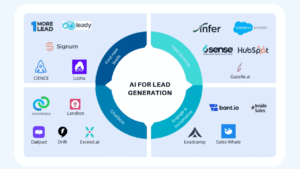Huawei announced the CloudMatrix 384 Supernode—a 16‑rack AI compute cluster achieving 300 petaflops of BF16 performance versus Nvidia’s 180 petaflops NVL72—using 384 Ascend 910C dual‑chiplet processors and high‑speed optical links. Developed under U.S. sanctions, the system targets domestic AI training workloads and exemplifies China’s effort to achieve hardware independence amid escalating tech tensions.
The CloudMatrix 384 Supernode: Specs & Performance
Huawei’s CloudMatrix 384 hosts 384 Ascend 910C chips across 16 racks, delivering 300 PFLOPs of BF16 compute—166% more than Nvidia’s 180 PFLOPs NVL72 system.
The architecture leverages optical interconnects for low latency and high bandwidth, a system‑level innovation that compensates for each processor’s lower per‑chip performance.
Memory capacity and bandwidth on the CloudMatrix 384 exceed NVL72 by 3.6x and 2.1x, respectively, enabling massive data throughput for training large‑scale AI models.
Engineering Under Sanctions
Despite U.S. Entity List restrictions, Huawei sourced 7 nm‑class Ascend 910C processors by pairing domestic design with foundry and HBM supply workarounds.
Alternative supply chains—relying on Samsung HBM and TSMC wafer production—underscore the hybrid global‑local nature of China’s chip ecosystem.
Power Consumption & Efficiency Trade‑offs
The CloudMatrix 384 consumes 559 kW, approximately 2.3x the power per FLOP of NVL72, trading efficiency for scale in a context of abundant domestic energy.
China’s robust grid—powered by coal, renewables, and nuclear—mitigates operational costs, making high‑density AI racks economically viable despite lower power efficiency.
Strategic Context: China’s AI Infrastructure Push
Huawei’s breakthrough aligns with a national strategic agenda: Alibaba’s ¥380 billion investment in AI infrastructure over three years marks the largest private computing commitment in Chinese history.
Collaborations—such as deploying CloudMatrix 384 to support DeepSeek‑R1 reasoning models—highlight an ecosystem approach to accelerate AI innovation domestically.
Market Implications & Global Competition
If validated, CloudMatrix 384 challenges Nvidia’s hardware leadership, offering enterprises and cloud providers alternative accelerator options.
Increased competition could expand global AI compute availability, drive down costs, and reduce strategic dependence on U.S. chipmakers.
Conclusion
Huawei’s CloudMatrix 384 Supernode sets a new performance benchmark in AI hardware—achieving 300 PFLOPs through a high‑density, sanction‑resilient design that trades energy efficiency for raw scale. As China’s tech sector rallies behind domestic infrastructure investments, the system exemplifies a broader shift toward self‑sufficiency and competitive diversity in the global AI chip market. For enterprise AI deployments, these developments promise more choices and a potential recalibration of vendor relationships in the AI race.









